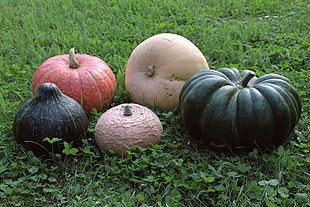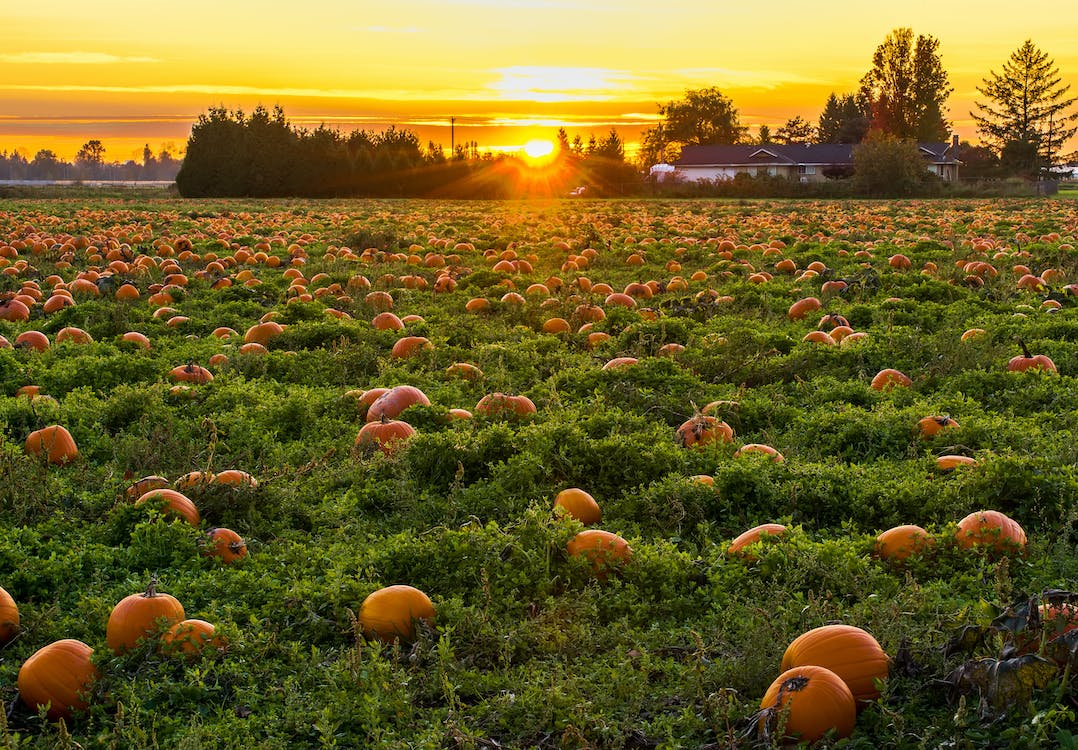Classic Pumpkin Pie Recipe
- 1 3/4 cups canned pumpkin puree
- 3/4 cup granulated sugar
- 1/2 teaspoon salt
- 1 teaspoon ground cinnamon
- 1/2 teaspoon ground ginger
- 1/4 teaspoon ground cloves
- 2 large eggs
- 1 1/4 cups evaporated milk
- 1 unbaked pie crust (homemade or store-bought)
Instructions:
- Preheat oven to 425°F (220°C).
- In a large bowl, whisk together pumpkin puree, sugar, salt, cinnamon, ginger, and cloves until well combined.
- Beat in the eggs, then gradually stir in the evaporated milk until smooth.
- Pour the mixture into the unbaked pie crust.
- Bake in the preheated oven for 15 minutes, then reduce the temperature to 350°F (175°C) and continue baking for an additional 40-50 minutes or until a knife inserted near the center comes out clean.
- Allow the pie to cool completely on a wire rack before serving.
- Optional: Serve with a dollop of whipped cream for added deliciousness.
Roasted Butternut Pumpkin Recipe
Ingredients:
- 1 medium-sized butternut pumpkin
- 2 tablespoons olive oil
- 1 teaspoon salt
- 1/2 teaspoon black pepper
- 1 teaspoon garlic powder (optional)
- 1 teaspoon dried thyme (optional)
- 2 tablespoons chopped fresh parsley for garnish
Instructions:
- Preheat the oven to 400°F (200°C).
- Peel the butternut pumpkin, remove the seeds, and cut it into 1-inch cubes.
- In a large bowl, toss the pumpkin cubes with olive oil, salt, pepper, and any optional seasonings like garlic powder or dried thyme.
- Spread the seasoned pumpkin cubes evenly on a baking sheet in a single layer.
- Roast in the preheated oven for 25-30 minutes or until the pumpkin is tender and golden brown, stirring halfway through for even cooking.
- Once done, remove from the oven and transfer the roasted butternut pumpkin to a serving dish.
- Garnish with chopped fresh parsley for a burst of color and freshness.
- Serve as a side dish, in salads, or as a delightful addition to various recipes.
Pumpkin’s Weight Loss Wonders: Unveiling Its Nutritional Power in Health Trends
In the ever-evolving landscape of health and wellness, one natural and versatile ingredient has taken center stage for its remarkable potential in aiding weight loss: the humble pumpkin. Beyond its association with cozy autumnal recipes and jack-o’-lantern carving, the pumpkin has emerged as a nutritional powerhouse that offers a myriad of benefits for those striving to shed those extra pounds.
Unlocking Weight Loss Secrets: How Pumpkin, Packed with Nutrients and Flavor
Packed with essential nutrients, low in calories, and boasting a unique combination of dietary fibers, antioxidants, and vitamins, the pumpkin has become an unexpected ally in the quest for a healthier and leaner body. In this article, we will delve into the science-backed reasons why pumpkin is helping you in your weight loss journey, exploring its various forms, from the vibrant orange flesh to its seeds and everything in between. So, let’s unravel the secrets of this versatile gourd and discover how it can be your new best friend on the path to a healthier, slimmer you.
The Health Benefits of this Nutrient-Rich Fall Vegetable
Pumpkin, often associated with fall festivities and seasonal decor, is more than just a decorative gourd. It is a highly nutritious and versatile vegetable that offers a wide range of benefits for your health and well-being. Here are some of the key benefits of pumpkin:

Low in Calories: Pumpkin is remarkably low in calories, making it an excellent choice for those looking to manage their weight. One cup of cooked, mashed pumpkin contains only about 49 calories.
Rich in Fiber: Pumpkin is a great source of dietary fiber, which aids in digestion and helps you feel full for longer. This can be particularly helpful for weight management and reducing the urge to overeat.
Abundant in Vitamins: Pumpkin is loaded with essential vitamins, especially vitamin A, in the form of beta-carotene. Vitamin A is crucial for maintaining healthy skin, vision, and immune function.
High in Antioxidants: Pumpkin contains various antioxidants, including beta-carotene, which can help combat oxidative stress, reduce inflammation, and lower the risk of chronic diseases.
Promotes Eye Health: The beta-carotene in pumpkin is known to support eye health and reduce the risk of age-related macular degeneration.
Boosts Immunity: The vitamins and minerals in pumpkin, such as vitamin C and zinc, contribute to a healthy immune system, helping your body ward off illnesses.
Regulates Blood Sugar: Pumpkin’s high fiber content, particularly in the form of soluble fiber, can help stabilize blood sugar levels and improve insulin sensitivity.
Heart-Healthy: Potassium, found in pumpkin, is essential for maintaining healthy blood pressure levels, reducing the risk of stroke, and promoting heart health.
Supports Skin Health: The vitamins and antioxidants in pumpkin can contribute to a healthy complexion, and topical pumpkin-based skincare products are also available for skin nourishment.
Weight Management: Due to its low calorie and high fiber content, pumpkin can aid in weight management by promoting a feeling of fullness and reducing calorie intake.
Bone Health: Pumpkin is a good source of vitamin K, which is important for bone health as it helps in calcium absorption and bone mineralization.
Digestive Health: The fiber in pumpkin supports a healthy digestive system by preventing constipation and promoting regular bowel movements.
Versatile Cooking Ingredient: Pumpkin can be used in various culinary applications, from soups and salads to smoothies and baked goods, making it an adaptable and flavorful addition to your diet.
Hydration: Pumpkin has a high water content, which can help keep you hydrated, especially when used in soups and stews.
Natural Mood Booster: The amino acid tryptophan found in pumpkin seeds can promote the production of serotonin, a neurotransmitter that can enhance mood and help with relaxation.
Incorporating pumpkin into your diet can be a delicious and nutritious way to reap these benefits. Whether you choose to enjoy it in savory dishes or sweet treats, pumpkin offers a wide array of advantages that can contribute to your overall health and well-being.

How to Prepare Delicious Pumpkin Recipes for Weight Loss
Introduction:
When it comes to achieving your weight loss goals, a diet rich in wholesome, nutrient-packed foods is essential. One often-overlooked ingredient that can be a game-changer in your weight loss journey is the pumpkin. Beyond its vibrant orange hue and association with seasonal treats, pumpkins are a nutritional powerhouse, offering a variety of health benefits while helping you shed those extra pounds. In this article, we’ll explore how to prepare delicious pumpkin recipes that not only tantalize your taste buds but also support your weight loss efforts.
Why Choose Pumpkin for Weight Loss:
Before diving into the recipes, it’s important to understand why pumpkin is a valuable addition to your weight loss plan:
Low in Calories: Pumpkin is naturally low in calories, making it a guilt-free addition to your meals. One cup of cooked, mashed pumpkin contains just around 49 calories.
Rich in Fiber: Pumpkin is an excellent source of dietary fiber. Fiber keeps you feeling full for longer, reducing the temptation to overeat or snack on unhealthy foods.
Loaded with Nutrients: Pumpkins are packed with essential nutrients, including vitamins A and C, potassium, and antioxidants. These nutrients support overall health and can help boost your metabolism.
Low in Fat: Pumpkin is virtually fat-free, making it an ideal ingredient for those looking to cut back on their fat intake.
Now that we’ve established why pumpkin is a valuable addition to your weight loss diet, let’s explore some delectable pumpkin recipes that are easy to prepare and will leave your taste buds satisfied.
- Pumpkin Soup:
Ingredients:
2 cups of diced pumpkin
1 onion, chopped
2 cloves of garlic, minced
2 cups of vegetable broth
1 teaspoon of olive oil
1 teaspoon of ground cumin
Salt and pepper to taste
Greek yogurt for garnish (optional)
Instructions:
In a large pot, heat the olive oil over medium heat. Add the chopped onion and garlic and sauté until translucent.
Add the diced pumpkin and ground cumin. Stir well to coat the pumpkin with the spices.
Pour in the vegetable broth and bring the mixture to a boil. Reduce the heat, cover, and let it simmer for 20-25 minutes, or until the pumpkin is tender.
Use an immersion blender to puree the soup until smooth. Alternatively, you can carefully transfer the mixture to a blender and blend until smooth.
Season with salt and pepper to taste.
Serve hot, garnished with a dollop of Greek yogurt if desired.
This pumpkin soup is not only delicious but also incredibly filling, thanks to the fiber content. It makes for a perfect appetizer or a light meal.
- Roasted Pumpkin Salad:
Ingredients:
2 cups of cubed pumpkin
1 tablespoon of olive oil
1 teaspoon of dried rosemary
4 cups of mixed greens (spinach, arugula, or your choice)
1/4 cup of pumpkin seeds
1/4 cup of crumbled feta cheese (optional)
Balsamic vinaigrette dressing
Instructions:
Preheat your oven to 400°F (200°C).
Toss the cubed pumpkin with olive oil and dried rosemary. Spread it out on a baking sheet lined with parchment paper.
Roast the pumpkin for 25-30 minutes, or until it’s tender and slightly caramelized.
While the pumpkin is roasting, prepare your salad by arranging the mixed greens on serving plates.
Once the pumpkin is ready, let it cool for a few minutes.
Top the greens with the roasted pumpkin, pumpkin seeds, and crumbled feta cheese (if using).
Drizzle with balsamic vinaigrette dressing and serve.
This roasted pumpkin salad combines the earthy flavors of pumpkin with the freshness of greens, making it a satisfying and nutritious choice for a weight loss-friendly meal.
- Pumpkin Smoothie:
Ingredients:
1 cup of cooked and mashed pumpkin (canned or homemade)
1/2 cup of unsweetened almond milk (or any milk of your choice)
1 ripe banana
1/2 teaspoon of cinnamon
1 tablespoon of honey or maple syrup (optional, for sweetness)
Ice cubes
Instructions:
Place all the ingredients in a blender.
Blend until smooth and creamy, adding ice cubes as needed to achieve your desired consistency.
Taste and adjust sweetness with honey or maple syrup if desired.
Pour into a glass and enjoy your pumpkin smoothie as a nutritious and filling snack or breakfast option.
This pumpkin smoothie is not only delicious but also a great way to kickstart your day with a boost of energy and fiber.

In conclusion, incorporating pumpkin into your diet for weight loss is a smart and flavorful choice. These recipes showcase the versatility of pumpkin and its ability to enhance both the taste and nutritional value of your meals. By incorporating these delicious pumpkin dishes into your regular meal plan, you’ll be well on your way to achieving your weight loss goals while savoring every bite. So, go ahead and embrace the goodness of pumpkin for a healthier, leaner you.
“Unveiling the Surprising Side Effects of Pumpkin Consumption: What You Need to Know!”
Pumpkin is generally considered safe for most people when consumed in reasonable amounts as part of a balanced diet. However, some individuals may experience side effects or adverse reactions, though they are usually mild and rare. Here are a few potential side effects associated with pumpkin consumption:
- Allergic Reactions: While rare, some individuals may have allergies to pumpkin. Symptoms of pumpkin allergies can include itching, swelling, hives, digestive discomfort, and in severe cases, anaphylaxis. If you suspect an allergy, it’s essential to seek medical attention.
- Gastrointestinal Upset: Eating large quantities of pumpkin or pumpkin seeds, particularly raw, may lead to digestive discomfort in some people. This can include symptoms such as bloating, gas, diarrhea, or stomach cramps.
- Blood Sugar Fluctuations: Pumpkin has a moderate glycemic index, so consuming large amounts of pumpkin-based foods, especially without balancing them with protein and fiber, may lead to temporary spikes in blood sugar levels. People with diabetes should monitor their blood sugar when consuming pumpkin.
- Interference with Medications: Pumpkin seeds are rich in vitamin K, which can interfere with blood-thinning medications like warfarin. If you’re on such medications, it’s advisable to consult with your healthcare provider before significantly increasing your pumpkin seed intake.
- Overconsumption of Carotenoids: Pumpkins are high in carotenoids, including beta-carotene, which can give the skin an orange tint when consumed in excessive amounts. This condition, known as “carotenoderma,” is harmless but may be cosmetically undesirable.
- Weight Gain: While pumpkin itself is low in calories and can be beneficial for weight loss, the way it is prepared and consumed can affect its impact on weight. Pumpkin desserts or dishes with added sugars and fats may contribute to weight gain if consumed in excess.
- Difficulty Digesting Seeds: The seeds of a pumpkin, also known as pepitas, are edible and nutritious. However, some individuals may find them challenging to digest, which can result in digestive discomfort. Roasting or cooking pumpkin seeds can make them easier to digest.
- Cross-Reactivity Allergies: Some people with pollen allergies may experience cross-reactivity with certain fruits and vegetables, including pumpkin. This condition is known as oral allergy syndrome (OAS) and can lead to itching or swelling in the mouth and throat.
It’s important to note that these side effects are relatively uncommon and often occur when pumpkin is consumed in excessive amounts or when an individual has specific allergies or sensitivities. Most people can enjoy pumpkin as part of a balanced diet without experiencing adverse effects. If you have concerns about pumpkin consumption or experience unusual symptoms after eating it, it’s advisable to consult with a healthcare professional for guidance.
To Know More about Pumpkin Please click Me
You May like:


